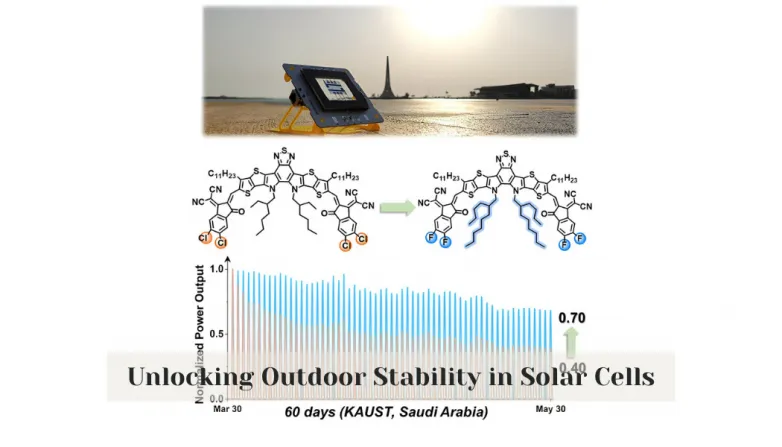Unlocking Outdoor Stability in Solar Cells
- Unlock a new source of energy with KAUST's discovery of a link between organic semiconductor and outdoor stability of organic solar cells. With applications from photovoltaic windows to net-zero greenhouses, this breakthrough could open up a world of possibilities.

KAUST researchers have discovered a link between the molecular structure of organic semiconductors and the outdoor stability of organic solar cells. This discovery, published in Joule, is expected to lead to many applications ranging from building-integrated photovoltaic windows to net-zero greenhouses. Y-NFAs, a family of organic solar cell materials, have broad absorption spectra and tunable energy levels, making them ideal components for organic photovoltaics. The team evaluated the outdoor stability of these devices under extreme hot climatic conditions and established that light is the main factor governing the outdoor lifetime of the devices. They also found that fluorine-bearing functional end groups and long hydrocarbon side-chains within Y-NFA molecules enhanced outdoor stability and protected them against photodegradation. The team is now planning international collaborations and working toward making market-ready devices.
What Factors Enhance Outdoor Stability of Y-NFAs in Organic Solar Cells?
- Light is the main factor governing the outdoor lifetime of Y-NFAs in organic solar cells.
- Fluorine-bearing functional end groups help enhance outdoor stability and protect against photodegradation.
- Long hydrocarbon side-chains also help enhance outdoor stability and protect against photodegradation.
- The team is applying their knowledge of Y-NFAs in outdoor stability to design market-ready devices.
- The team is now planning international collaborations to further research Y-NFAs in organic solar cells.
- The team hopes to eventually apply their research to create building-integrated photovoltaic windows and net-zero greenhouses.
Also read

